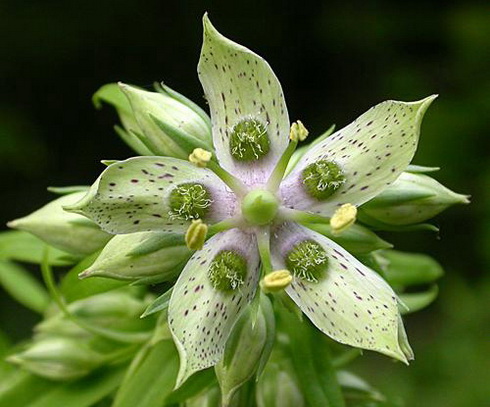|

Floral variation provides part of the basis for dividing the flowering plants into two major groups: the dicotyledonsand the monocotyledons. The informal name "dicot" is given to plants having two cotyledons (seed leaves) in each seed; "monocot" refers to plants that have one cotyledon in the seed. In monocots, the flower parts occur in threes or multiples of three, for example, three sepals, three petals, six stamens, and a pistil with three carpels. In dicots, flower parts usually occur in fours or fives or multiples of four or five. Although dicots and monocots may have other numbers of floral parts, many other features are unique to each group. Dicots include about 80 percent of all angiosperm species, including many herbaceous plants and all woody, flower bearing trees and shrubs. Monocots are primarily herbaceous, but they also include some trees, such as palms and Joshua trees.
See also: Corolla Shapes, Types of Inflorescence
|
